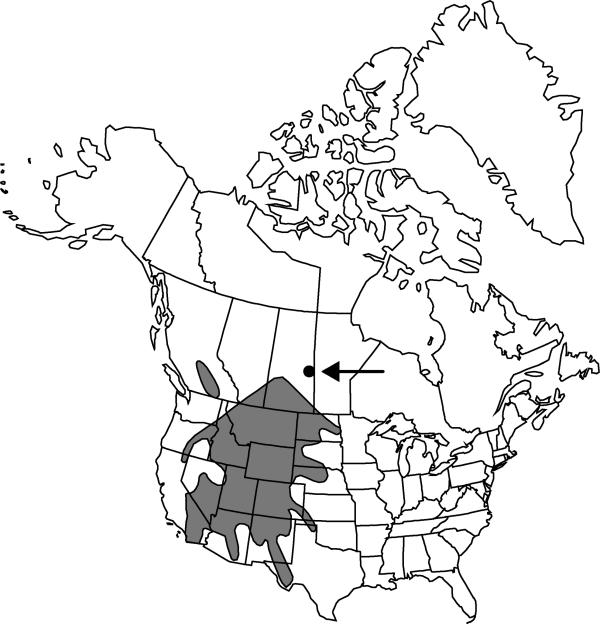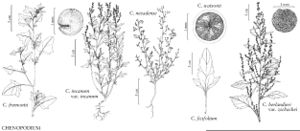Difference between revisions of "Chenopodium fremontii"
Botany (Fortieth Par allel), 287. 1871.
FNA>Volume Importer |
imported>Volume Importer |
||
| (3 intermediate revisions by 2 users not shown) | |||
| Line 6: | Line 6: | ||
|place=287. 1871 | |place=287. 1871 | ||
|year=1871 | |year=1871 | ||
| + | }} | ||
| + | |special_status={{Treatment/ID/Special_status | ||
| + | |code=F | ||
| + | |label=Illustrated | ||
}} | }} | ||
|basionyms= | |basionyms= | ||
| Line 31: | Line 35: | ||
-->{{#Taxon: | -->{{#Taxon: | ||
name=Chenopodium fremontii | name=Chenopodium fremontii | ||
| − | |||
|authority=S. Watson | |authority=S. Watson | ||
|rank=species | |rank=species | ||
| Line 45: | Line 48: | ||
|publication title=Botany (Fortieth Par allel), | |publication title=Botany (Fortieth Par allel), | ||
|publication year=1871 | |publication year=1871 | ||
| − | |special status= | + | |special status=Illustrated |
| − | |source xml=https:// | + | |source xml=https://bitbucket.org/aafc-mbb/fna-data-curation/src/2e0870ddd59836b60bcf96646a41e87ea5a5943a/coarse_grained_fna_xml/V4/V4_549.xml |
|genus=Chenopodium | |genus=Chenopodium | ||
|subgenus=Chenopodium subg. Chenopodium | |subgenus=Chenopodium subg. Chenopodium | ||
Latest revision as of 21:59, 5 November 2020
Stems erect to spreading, simple proximally, branched distally, 1–8 dm, farinose. Leaves non-aromatic; petiole 0.4–2.5 cm; blade usually broadly triangular, sometimes ovate to elliptic, 0.7–6 cm thick, base truncate or cuneate, margins entire or with a pair of basal teeth or lobes, apex rounded to obtuse, farinose abaxially. Inflorescences glomerules in terminal and axillary interrupted spikes, 16–22 × 4–5 cm; glomerules 2–5 mm diam., maturing mixed; bracts small, margins entire. Flowers: perianth segments 5, distinct nearly to base; lobes ovate, 0.7–1 × 0.5–0.9 mm, apex obtuse, carinate, farinose to subglabrous, completely covering fruit at maturity; stamens 5; stigmas 2, 0.2–0.5 mm. Utricles ovoid; pericarp nonadherent, warty-smooth. Seeds round, 1–1.3 mm diam.; seed coat dark reddish brown to black (sometimes with light streaks), ± smooth. 2n = 18.
Phenology: Fruiting late summer–fall.
Habitat: A wide variety of habitats from desert, cliffs, talus, and moist shaded areas under aspen, junipers, or pinyons, often in riparian habitats
Elevation: 2000-2900 m
Distribution

Alta., B.C., Man., Sask., Ariz., Calif., Colo., Idaho, Kans., Mont., Nebr., Nev., N.Mex., N.Dak., Oreg., S.Dak., Tex., Utah, Wyo., Mexico (Baja California, Coahuila, Tamaulipas).
Discussion
Selected References
None.
